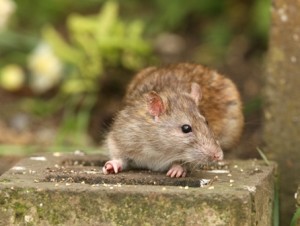 Rodents are some of the most adaptable creatures on the planet and can be sometime difficult to exterminate. Rats and mice can cause significant damage to a property as they chew or gnaw on building insulation, wallboard and wires. Rodents are easy to identify as they leave a lot of evidence after themselves. Rodents are known to be rapid breeders. They are also known carriers of many diseases and pose a health hazard to humans. Both rats and mice belong to a rodent family. Rats are medium-sized with a long thin tail whereas mice are tiny, sparrow-sized rodent with a long tail.
Rodents are some of the most adaptable creatures on the planet and can be sometime difficult to exterminate. Rats and mice can cause significant damage to a property as they chew or gnaw on building insulation, wallboard and wires. Rodents are easy to identify as they leave a lot of evidence after themselves. Rodents are known to be rapid breeders. They are also known carriers of many diseases and pose a health hazard to humans. Both rats and mice belong to a rodent family. Rats are medium-sized with a long thin tail whereas mice are tiny, sparrow-sized rodent with a long tail.
Common Structure Infesting Rodents in Canada
Rodents’ instincts make them difficult to control, and they present a serious menace to your home. If you’re in need of rodent control services, here’s what you should know about these pests:
Instincts: Rats are instinctively wary of rat control measures such as traps and bait, and colonize in attics, burrows, under concrete and porches, in wall voids and other hard to reach places.
Disease: Rats can harbor and transmit a number of serious diseases. They can also introduce disease-carrying parasites such as fleas, lice and ticks into your home.
Access: They invade your home seeking food, water and warmth. Without mouse control intervention, one pair of mice may produce 200 offspring in four months.
Contamination: Each mouse can contaminate much more food than it eats.
House Mouse
Latin Name: Mus musculus
Appearance: Small and slender, 3 to 4 inches long, with large ears, small eyes and pointed nose. Light brown or light gray. Droppings are rod-shaped.
Habit: Nests within structures and burrows. Establish a “territory” near food sources that are generally 10 to 30 feet from nest. They are inquisitive, but very wary and are also excellent climbers.
Diet: Omnivorous, but prefers cereal grains.
Reproduction: Prolific breeders by two months of age. Can have a litter of four to seven young as often as every 40 to 50 days. Live up to one year.
Other: The house mouse has a sharp sense of hearing and communicates with other house mice through squeaks. Some of these squeaks are audible to humans, while others extend into the ultrasonic range. House mice are nocturnal and build nests in sheltered locations.
Norway (Brown) Rats
Latin Name: Rattus norvegicus
Appearance: Brown, heavy-bodied, 6 to 8 inches long, with small eyes and ears and blunt nose. Tail is shorter than head and body. Its fur is shaggy. Droppings are capsule-shaped.
Habit: Nests in underground burrows, from which they enter buildings in search of food. Tends to remain in hiding during the day.
Diet: Omnivorous, but prefers meats and diets high in fats. Cannot survive long without water.
Reproduction: Reaches sexual maturity in two months and can breed any month of the year. Litter may number from eight to 12. Females can have four to seven litters per year. Adults live as long as one year.
Other: Norway rats are prevalent throughout North America. Arriving on ships from Great Britain circa 1775, these rodents quickly spread throughout the American Midwest. By the 1800s, they were present as far as Ontario, Canada.
Roof (Black) Rats
Latin Name: Rattus rattus
Appearance: Black or brown, 7 to 10 inches long, with a long tail, large ears and eyes, and a pointed nose. Body is smaller and sleeker than Norway rat. Fur is smooth.
Habit: Nests inside and under buildings, or in piles of rubbish or wood. Excellent climber that can often be found in elevated areas, such as the upper parts of structures.
Diet: Omnivorous, but shows a preference for grains, fruits, nuts and vegetables.
Reproduction: Becomes sexually mature at four months, producing four to six litters per year that consist of four to eight young each. Lives up to one year.
Other: Black rats have long been named as the cause of the Black Death of the Middle Ages. While this plague is no longer a ready threat to humans, roof rats are still carriers of disease. They may transfer diseases to both human and domestic animals.
Prevention tips
- It’s important to get rid of rodents very quickly. Keep all garbage in pest proof containers with tightly closed lids.
- Remove fallen fruit and nuts from your yard as well as pet foot right after feeding.
- Repair any plumbing leaks to remove a water source; any cracks in cement footings and foundations
- Remove any unnecessary cardboard objects as they are known to attract rodents. They tend to chew cardboard up for use in their nests.
- It is recommended to contact a pest control professional experienced in rodent extermination.

